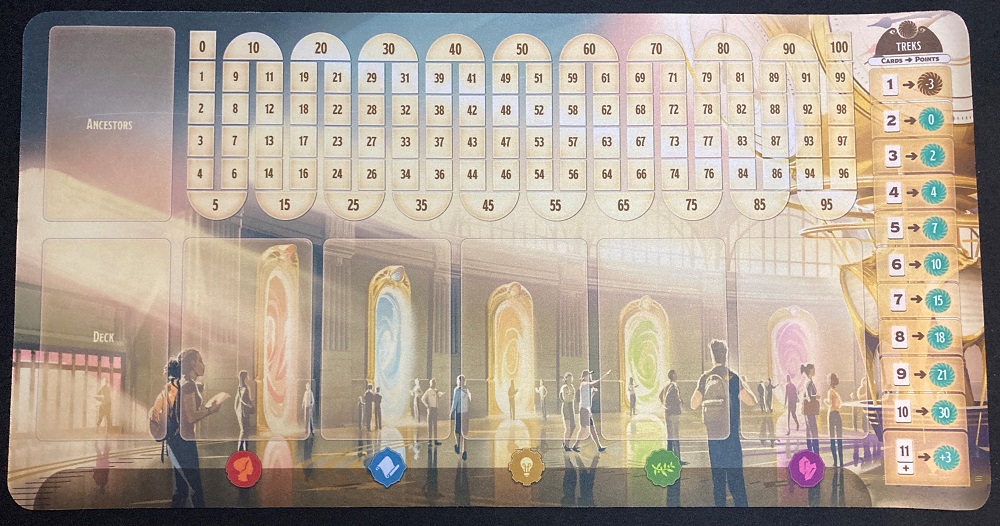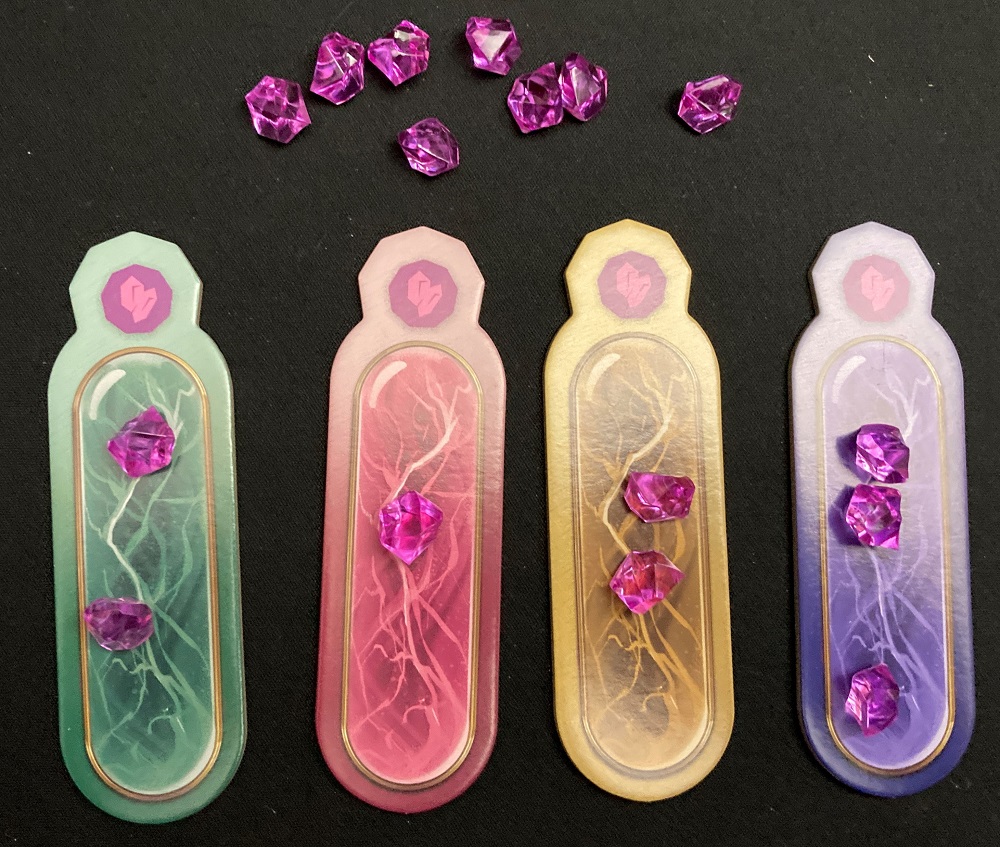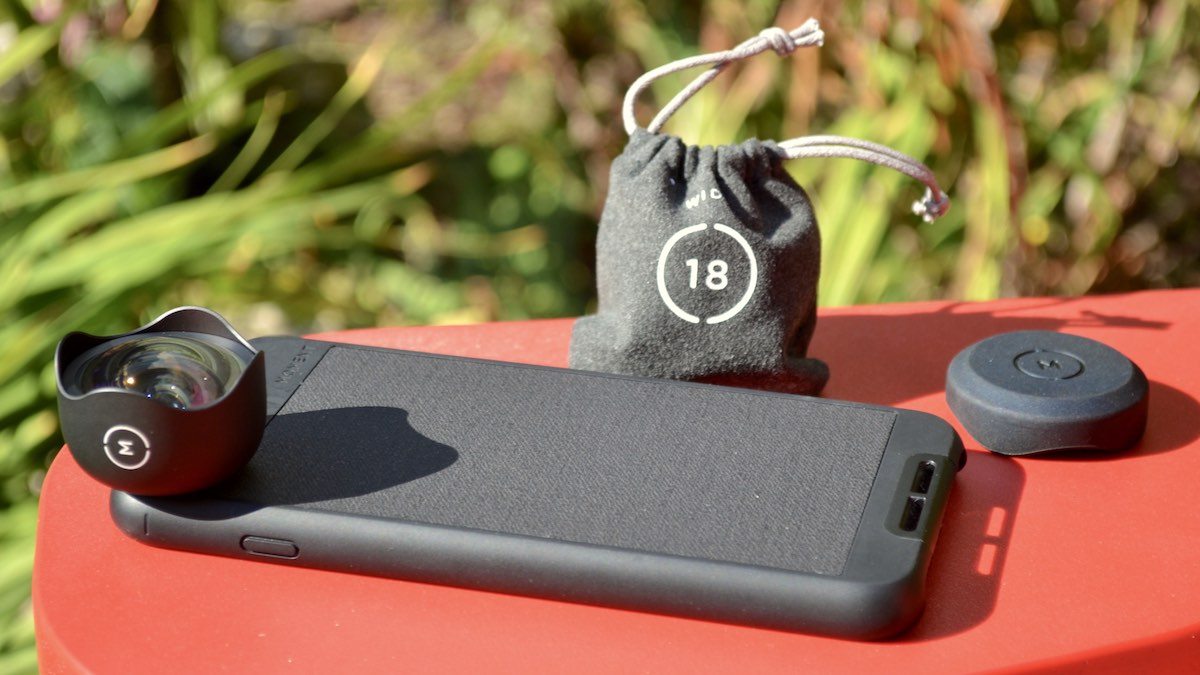Wouldn’t it be incredible if there were a way to travel through time? As a history teacher, I have often thought about how great it would be to witness historical events in person. I am not alone. There are many books and movies about time travel and even several games. However, now from the comfort of your gaming table, you too can go Trekking Through History.
What Is Trekking Through History?
Trekking Through History is a game for 2-4 players, ages 10 and up, and takes about 30-60 minutes to play. Over 4,700 backed this game in February of this year on Kickstarter, and it’s now available on Amazon for $50 for a copy of the game. This retail release also includes the Time Warp Expansion. Trekking Through History was designed by Charlie Bink and published by Underdog Games, with illustrations by Eric Hibblerer.
Trekking Through History Components
- 1 Neoprene Playmat
- 108 History Cards
- 12 Ancestor Cards
- 1 Clock
- 4 Pocket Watches
- 4 Player Point Markers
- 84 Experience Tokens
- 20 Time Crystals
- 4 Crystal Tanks
- 24 Itineraries
- 1 Rulebook
- 4 Reference Cards
- 1 Date index
- 24 Time Warp cards
- 4 Time Warp markers
- 1 Time Warp Rulebook

The game comes with a nice neoprene playmat that rolls up and fits right in the box with the rest of the components. The playmat has a scoring track and is where you place the history cards and ancestor cards. It even has a chart along the right side to help you when scoring your treks.

The history cards are collected a played into sets called treks. The top of the card contains the name of the event and its date. On the bottom are listed the amount of time during the day it takes to visit that historical event as well as the experience tokens you gain for playing them.

Each player has their own pocket watch they place on the clock to keep track of how much time they have spent during the current day as well as the turn order for the players.

Experience tokens are collected by playing history cards that can be placed on your itinerary in order to earn victory points or time crystals. There are 24 different itineraries, each with different ways to earn points.

Time crystals let you decrease the amount of time you move along the clock when you take a history card. They can be earned by playing your history cards and are stored in your time crystal tank until you use them.
How to Play Trekking Through History
You can download a copy of the rulebook here.
The Goal
The goal of the game is to earn the most victory points by the end of the game.
Setup
Setting up the game is fairly quick. Place the playmat in the center of the play area with the supply tray containing all of the experience tokens and time crystals nearby. On the playmat, place a stack of ancestor cards, the number of which depends on the number of players. Now separate the history cards into three decks based on the Roman numeral on the top right. These represent Day 1, Day 2, and Day 3. Shuffle each deck of history cards. Place the Day 1 deck face up in the history deck space at the bottom left of the playmat and draw five cards from the top and place them in the five empty slots to the right of the deck. The top card of the deck and the other five cards form the departures row. Place the Day 2 and Day 3 decks aside to use later.
Next, shuffle the itineraries and deal four face-down to each player. Players choose one of their itineraries at random and place the other 3 near them face down to use later. Each player then takes a crystal tank and places one time crystal on it. Players also each take a reference card. Place the clock board near the playmat. Players pick a pocket watch and stack them in random order on top of one another in the 12 o’clock space. Finally, each player takes a point marker of the same color as their pocket watch and places it on the zero space on the scoring track of the playmat. You are now ready to play Trekking Through History.

Gameplay
The game is divided into three days. During each day, the players can take a number of turns. The pocket watches on the clock board determine turn order. The player with the pocket watch on top of the stack at 12 o’clock goes first. Then the next player in the stack and so forth. After everyone has taken their first turn, the player whose pocket watch is furthest behind goes next. In case of a tie, then the player whose pocket watch is on top goes first. It is possible for a player to take multiple turns in a row if they continue to be the furthest behind.
During a player’s turn, they must follow five steps in order: choose a card, move the pocket watch, collect benefits, place a card in the trek, and slide and refill the history cards. Let’s take a look at each step in greater detail.
Choose a Card
A player starts their turn by selecting one of the six history cards from the departures row. History cards are how you earn points during the game. Instead of selecting a history card, a player may instead select an ancestor card. Like history cards, they can be placed into a trek. However, ancestor cards do not have a date, which makes them easier to visit in chronological order.
Move the Pocket Watch
After selecting a card, look at the number in the lower left corner of the card. That is the number of hours you must spend at that historical event. Move your pocket watch that may hours on the clock board. If you land at a space with another pocket watch, place your pocket watch on top of the stack. At this time, you can spend time crystals to reduce the time you spent. For each time crystal you spend, you can subtract one hour from the total. You can spend more than one time crystal, but you cannot make any card cost less than one hour. Also, you cannot spend any time crystals you might earn from the current card.
Collect Benefits
Once you have moved your pocket watch, you now collect your benefits. Look at the lower right corner of the card you chose and see which types of experience tokens or time crystals you collect. You also collect benefits shown on the playmat below the space where your card was located. Place any time crystals into your crystal tank. Then place experience tokens onto your itinerary. Tokens are placed in the uppermost empty space of the column matching the token. Wild tokens can be placed in any column. If you place a token on a space with an icon on it, or completely fill a horizontal row with an icon at the end of it, then earn what the icon shows. If it is a time crystal, collect a time crystal from the supply and add it to your crystal tank. If it is a victory point icon, then move your point marker along the point track that many spaces.
Add to Trek
Next, you must place your card into a trek. A trek is a series of events visited in chronological order. The more events in a trek, the more points you’ll score at the game’s end. On your first turn, just place the card in front of you to start a trek. On subsequent turns, if your new card’s year is chronologically later than the last card in your trek, then stack the new card on top so you can see all of the dates of the previous cards. If the new card has an earlier date, you don’t add it to the trek. Instead, collapse the cards in that trek into a single stack and turn it over to show that it is completed. Then use the new card to start a new trek. If you selected an ancestor card, then place it on your current trek. Its date then becomes the same as the date of the card immediately under it. You cannot start a new trek with an ancestor card.
Refill Cards
Finally, slide the history cards in the departures row to the right to fill in any empty slots. Slide the top card of the deck to fill the leftmost empty space in the row.
End of a Day
When a player’s pocket watch reaches the 12 o’clock spot, they must stop there. If the history card and any time crystals used brings your pocket watch brings it exactly to the 12 o’clock spot without any extra time, the player scores a punctuality bonus of 3 victory points. If your time would move you past 12 o’clock, then you still stop at 12 but don’t get the bonus. Once all of the players are at 12 o’clock, the day ends. Discard the current day’s deck and all of the history cards in the departures row. Now take the next day’s deck and use these cards to fill out the departures row with the deck on the left slot. Players discard their current itinerary and all tokens on them and then select a new itinerary from their remaining cards to use for the upcoming day. Players continue on their current trek and keep the time crystals they have in their crystal tank. Now begin the next day with the pocket watches at the 12 o’clock position.
Game End
The game ends when all players are at 12 o’clock at the end of the third day. Players now calculate their final score. Some of their points are already on the score track from history cards and itineraries. Next, players score one point for each time crystal they still have in their crystal tank. Finally, players score their treks based on the number of cards in each trek. Use the trek scoring reference on the playmat to determine the points for each trek. The player with the most points is the winner. In case of a tie, the player with the longest trek wins. If there is still a tie, then the tie players compare their second-longest trek, then subsequent treks until there is a winner. If there is still a tie, then they share the victory.

Trekking Through History is a 2022 GeekDad Game of the Year Finalist!
Why You Should Play Trekking Through History
Trekking Through History is a great game. The artwork on the history cards is incredible. It reminds me of the classic posters for Disneyland attractions, and the text on the front of the cards offers an invitation to visit those historical events. Plus, the backsides of the cards have a description of the events. This is a great way to learn some history as you have fun playing the game. I have always been impressed by the quality of the components of other products by Underdog Games and Trekking Through History is no exception. I like the fact that the experience tokens and pocket watches are plastic and not cardboard counters and there is a small tray for holding all the tokens during play as well as for storage. Plus, it comes with a neoprene playmat! Often you have to order playmats separately. If that were not enough, the box also contains a Gametrayz insert that keeps all of the components organized so it is easy to put away and then ready for your next gaming session.

While the game looks amazing, I am even more impressed with the gameplay and mechanics. Choosing which history card to draw during your turn involves quite a bit of thinking. Not only do you need to consider how it will fit chronologically into your current trek, but also consider the time on the card as well as what benefits you gain. I really like the time management aspect of the game. The clock board with the pocket watches is a great way to allow players to modify the turn order and even take more than one turn in a row. Time crystals become very important in that they allow you to decrease the time requirement on a history card. I enjoy the challenge of balancing time with gaining experience while also trying to create treks with as many cards as possible.
For those concerned that they will have a hard time playing the game because they are not good at memorizing dates, don’t worry. Trekking Through History does not require any prior knowledge or a degree in history in order to play and enjoy it. In fact, the game is a great medium for learning history and I like how they include well-known historical events as well as more obscure yet important events of which many might be unaware before playing.
Trekking Through History is a challenging and enjoyable game that is great for families as well as for game nights. I am so thoroughly impressed with this game for many reasons as I have mentioned previously. Not only do I like the quality of the components and the look and table presence of the game, but it also combines different mechanics to create a unique form of gameplay that requires players to consider more than one option when selecting a card to add to a trek since there are different ways to earn points. However, above all, the game is fun to play. Whenever entertainment can be mixed with a little education, I am all for it. For these many reasons, I highly recommend Trekking Through History and have awarded it our GeekDad Approved designation.
For more information or to purchase a copy of Trekking Through History for yourself, go to their Amazon page.
Click here to see all our tabletop game reviews.
![]() To subscribe to GeekDad’s tabletop gaming coverage, please copy this link and add it to your RSS reader.
To subscribe to GeekDad’s tabletop gaming coverage, please copy this link and add it to your RSS reader.
Disclosure: GeekDad received a copy of this game for review purposes.





